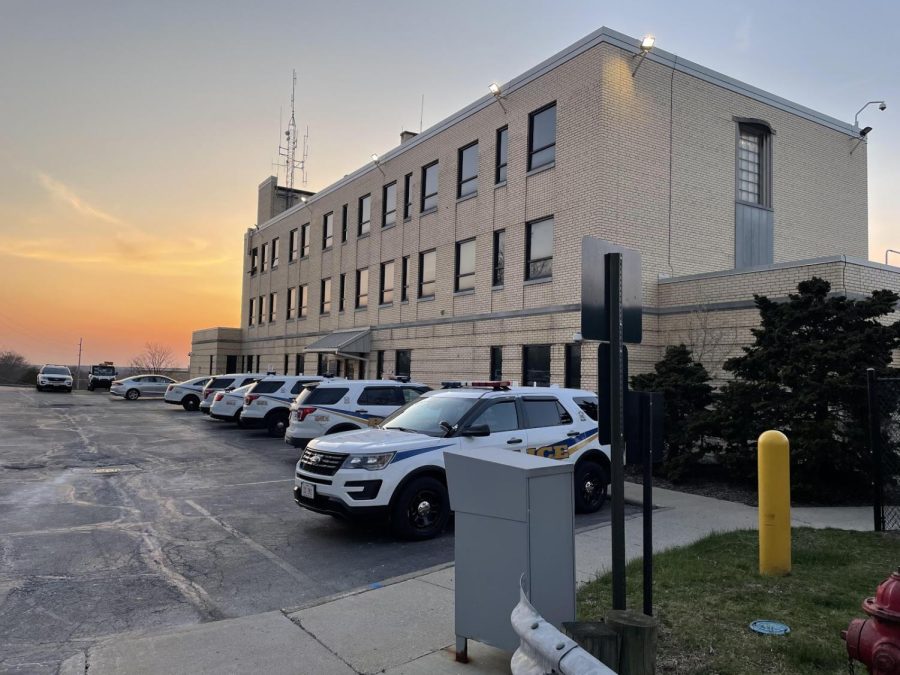When a safety threat is presented to a campus, students, faculty and staff must be kept informed about potential or unfolding threats under the Clery Act.
“We prioritize our safety here on campus to our students, faculty and staff,” said Tricia Knoles, a sergeant with the Kent State University Police Services. “We prioritize getting that information out when that information needs to get out.”
The Clery Act, signed in 1990, requires higher education institutions to inform students, faculty and staff of threats to campus through timely warnings and emergency alerts.
During “immediate” or imminent threats that occur on campus, as described in the law, the university releases information through its Flash ALERTS notification system. Threats include, but are not limited to, murder, robbery, aggravated assault and sex offenses including rape and fondling. People are also alerted to campus closures, which can be weather related.
Emergency notifications are sent via text messages to all students, faculty, staff and other people in the system and are posted in a banner at the top of any university-run website page, in an email and on Facebook and X (formerly known as Twitter).
These alerts, which are only required to be sent out if an incident occurs on campus property, “don’t require any specific crime to be triggered, only the broad existence of a threat,” according to S. Daniel Carter, president of Safety Advisors for Educational Campuses.
“Part of the thinking behind this is that an institution doesn’t necessarily have the jurisdiction or responsibility to address emergencies beyond their campus boundaries,” Carter said in an email.
The university’s 2023 Annual Security Report defined an emergency as an event that causes or may cause risk of death, illness or serious injury to the “university community,” as well as a “significant disruption” to the university’s operations, among other definitions.
“Rather than establishing rigid parameters for qualifying an event as an emergency, this definition is intended to emphasize the actual and potential catastrophic effect, and the imminent threat and seriousness inherent to emergencies,” the report said. “Other events may produce crises or harmful effects, but an emergency is distinguished by the severity of the threat and its effects, as well as the ongoing threat posed to the university community.”
Carter said the definition scope “university community“ is not provided in the Clery Act, so that remains up to interpretation.
Knoles said the decision to issue a Flash ALERT for off-campus incidents differs from case to case.
“You monitor the situation,” Knoles said. “You see, ‘Is there a potential for this imminent threat of danger to come onto campus? If there are instances when we feel that there may be an immediate or imminent threat coming towards campus, we’re still going to error on the side of caution [and issue an emergency alert], even though it technically didn’t happen on campus first. We want to make sure that we keep everybody safe.”
According to the report, the Kent State University Police works in conjunction with the city of Kent’s police department through a mutual aid agreement.
In the case of a “serious or ongoing threat to the campus community,” a timely warning must be sent out. The Clery Act says this warning requires a “case-by-case analysis.”
Eric Mansfield, assistant vice president for university communications and marketing (UCM), said the university can release information through email, on its website and with other methods without the need for a Flash ALERT, as well.
Sending out alerts
The Clery Act does not identify a specific person or group who should send out alerts, only saying the office or individual should have “authority and capability to issue campus-wide communication.”
While monitoring a situation classified as an “imminent threat” to campus, the university’s police department will reach out to UCM about sending out Flash ALERTS to those in the system.
If information must be sent out immediately in more extreme situations, such as having an active shooter on campus, dispatchers can put out Flash ALERTS themselves, Knoles said. Later, they would contact UCM to take over the alerts.
The Flash ALERTS system covers all university campuses. All students, faculty and staff are automatically put in the system, and they can add up to two people to receive notifications through their account.
Clery did not apply: Shots fired near TKE Feb. 3
During a party that carried into the early morning of Feb. 3, gunshots were fired outside the Tau Kappa Epsilon fraternity house at 212 University Drive near campus. Footage from the party showed male subjects fighting inside the house before gunshots were fired outside of the house.
An eyewitness, sophomore history major Elizabeth Angione, told KentWired she heard three gunshots fire off while standing outside the fraternity house. She said fraternity brothers then told people to go inside, leading them into the basement and bedrooms.
Police were on the scene, and they left around 1:30 a.m., according to Angione, and she said she did not see paramedics.
This incident occurred in Kent city jurisdiction, so the city handled the report of the call. Knoles said university police assisted with perimeter areas and monitored if any threat advanced toward campus.
Since the situation occurred in a Clery-defined “non-campus property,” the university was not required to send out an emergency Flash ALERT, and since Clery defines the requirements for a timely warning as a “case-by-case analysis,” the university had to interpret for itself whether it would send one out or not.
A Flash ALERT was not sent out because the university’s police department found no credible information that an imminent threat was coming toward campus nor onto campus, Knoles said.
“[The situation] was monitored throughout the duration and afterwards, as well,” she said. “Obviously, we work with the city very closely and communicate with them, and so there was just no credible direction of travel that anyone was coming onto campus, of any type of victim.”
Mansfield said the police department called him at 12:32 a.m. Sunday, notifying him that shots were fired and they may need a text alert sent out. The department called him again at 12:35 a.m. and said to hold off on the alert because they were still assessing the situation.
At 1:22 a.m., Mansfield was told the department had made the decision to not send an alert.
The university also did not send out an informational email about the situation.
“It absolutely was a conversation about university leaders on Sunday,” Mansfield said. “The decision was made to just allow the city of Kent to continue to process what they were doing.”
The Clery Act does not define gunfire as a reportable offense if the shot is not aimed at a person, Carter said.
“While recklessly discharging a gun is certainly both serious and irresponsible, if it is isolated and not directed at any person, it may not present any kind of ongoing threat,” he said. “This determination would best be made by the police who respond. Under [the university’s] stated policy, an emergency notification determination probably should have been made, but because it was local rather than campus police who responded, this may not have happened (precisely why the legal requirement is limited to campus). Also, any possible threat may have well been mitigated by that point.”
Knoles said one of her daughters, who is a Kent State student, texted her in concern about the situation early Sunday morning.
She told her daughter, “If there’s anything for you to be worried about, you would have gotten a Flash ALERT by now.”
“As a parent, I get that worry and that concern, but the good thing is I get to see behind the scenes and everything that goes into [possibly sending an alert] and how many people are monitoring that,” Knoles said.
If the situation that occurred near TKE was expected to be brought onto campus, meaning if someone with a gun was reportedly running toward campus, for example, Knoles said that would change the situation.
This is why alert decisions are made on a case-by-case basis, she said.
Clery applied: Flash Vapes robbery
A Flash ALERT telling people on campus to shelter in place was sent out May 27, 2023, in response to an armed robbery at Flash Vapes at 1444 E. Main St. in Kent. The suspect, carrying a firearm, was alleged to be heading toward campus. Police called off the “shelter-in-place” order later that night.
The suspect was arrested 10 days later.
On the day of the robbery, Knoles said a “credible witness” stated they saw a person matching the description of the suspect coming toward campus. This would constitute an “immediate” threat to the campus community, as defined by the Clery Act, which is why the university sent out an alert even though the incident occurred off campus.
“Obviously, we’re going to put a Flash ALERT out because we want people to know that ‘Hey, be on the lookout for this person and stay clear of them,’” she said.
Other incidences
A Flash ALERT was issued for the following non-weather-related incidents, among others:
- Shot sends shockwaves through Kent campus (April 3, 2014)
- Man assaults victim in car near Kent State University (Nov. 8, 2016, from Cleveland 19)
- Kent State Police search for suspect in assault at math building (Oct. 12, 2021)
- Multi-alarm fire strikes historic mill complex in Kent (Dec. 2, 2022)
Informational emails, rather than emergency alerts, were sent out for these non-weather-related incidents, among others:
- Two Kent police officers, suspect shot after attempted burglary on East Summit Street (Jan. 16, 2021)
- Police locate driver of stolen car near White Hall following multi-car accident, chase (Feb. 12, 2024)
Staying safe
Knoles urged people to look deeper into the information they read about potentially unsafe situations on social media. To stay safe when out with friends, she encouraged students to leave the party when it seems to get out of control or overcrowded.
If gunshots or other alarming noises are heard, students should get to the most safe location and call 911 first, she said.
“I know that that actually sounds elementary, but there are other times where people instead of calling 911 first will call a friend, will call a parent, will call an RA or an RHD,” Knoles said. “You’re delaying that response by not calling 911 first.”
Isabella Schreck is editor-in-chief. Contact her at i[email protected].








